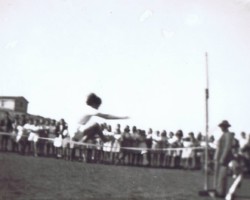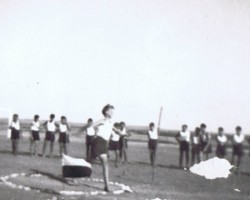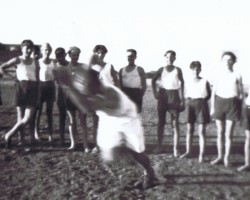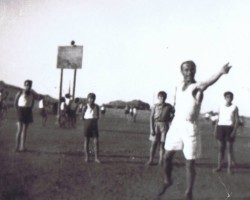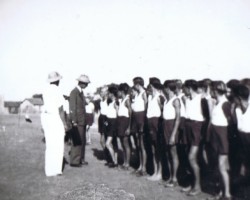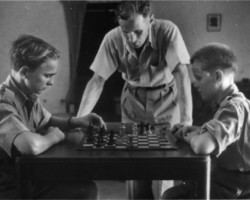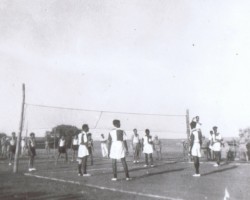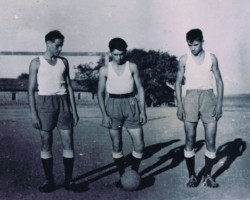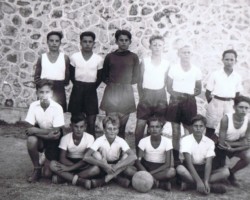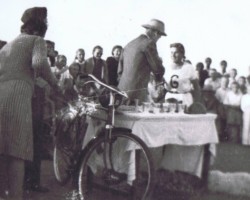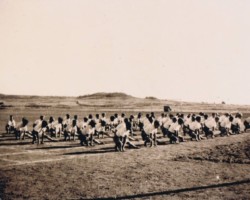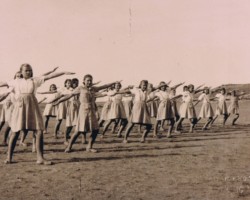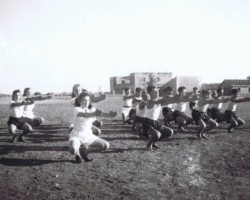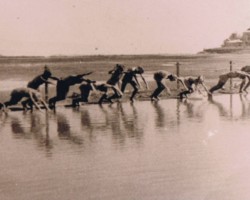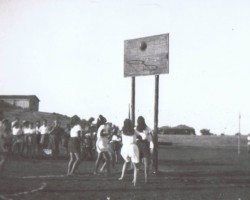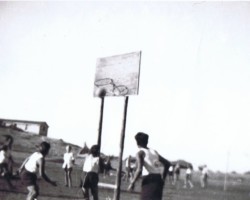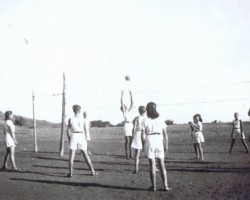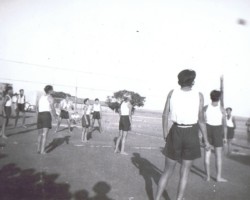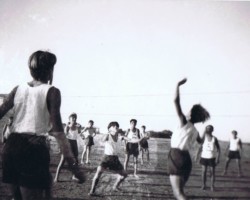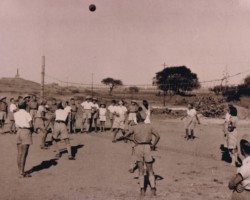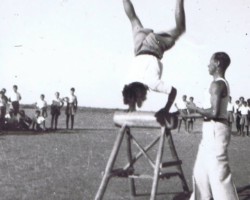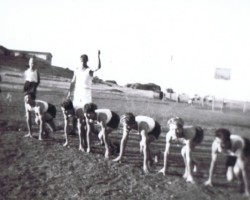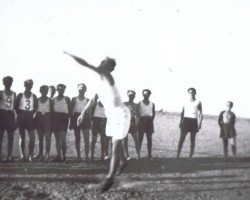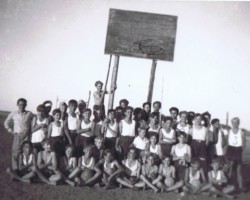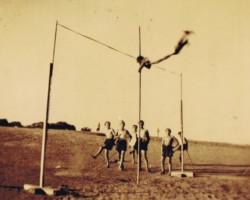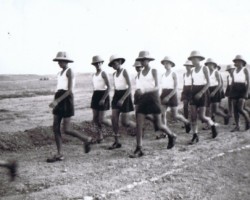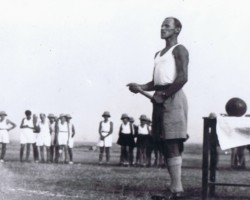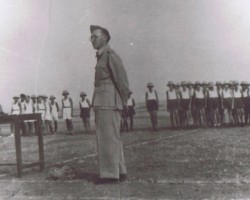Quick Links
PRI Balachadi Settlement – Sport
The physical condition of children and young people arriving at the Balachadi estate was very poor, and in many cases catastrophically poor. Therefore, one of the most urgent tasks was to organize activities in the estate aimed at improving their general physical condition. However, this became possible only when a specially delegated sports specialist from the army arrived at the estate – Antoni Maniak, a pre-war Pogoń Lwów player, who took care of the physical education of children and young people in Balachadi. His commitment, professionalism and inexhaustible energy meant that in a short time their general condition improved significantly. This resulted, regardless of the classes conducted during lessons, in the introduction of a mandatory half-hour morning gymnastics for all students, combined with walks and runs, as well as organizing afternoon classes in various sports for all those willing.
Shortly after Antoni Maniak arrived at the estate, football, volleyball, basketball and even field hockey teams, which were very popular in India, were formed in Balachadi. A significant part of the youth began to practice various athletics disciplines: all kinds of jumps (long jump, high jump), throws and runs. In addition, swimming lessons were organized for older youth. The introduction of competition between individual classes and the organization of large estate competitions, to which even Maharaja Digvijaysinhji and other guests from nearby Jamnagar were invited (this was the case in 1945, when large sports games were held in the estate), were an incentive to practice and improve their skills in the field of sports. Over time, the level of training of players in some disciplines was so high that, for example, youth neighborhood football and volleyball teams successfully competed with Indian or British military teams, in which specially trained English officers played (such matches were organized over time, carefully selecting the neighborhood’s representation in a given discipline in advance).
It is worth emphasizing that all the facilities and sports equipment that filled them – football pitches with goals, volleyball and basketball courts, a track around the stadium, throwing areas and athletics jumps – were built by the older youth of the estate under the leadership of coach Maniak. He himself – calling himself the Lviv “batiar” – was extremely proud of the sports achievements of his pupils and during his later parting with them, he reminded them several times to never stop training and taking care of their physical condition. And in many cases, this is exactly what happened.
